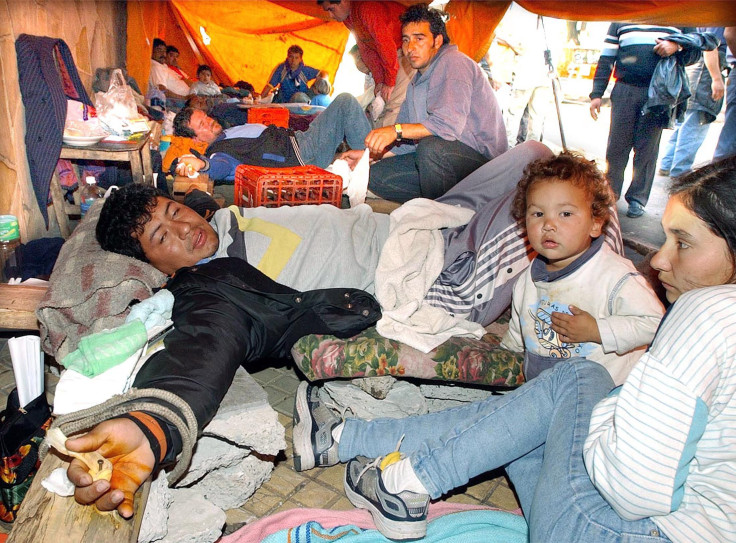
For the past 21 days, a group of eight men and one woman have been lying against a wall in Luque, Paraguay having crucified themselves in protest of being laid off. The eight men worked for the Vanguardia Bus Company and the woman joined the mass crucifixion in support of her husband who lost his job as a bus driver. The protesters laid down on a cross, which was lined up on the ground and had nails driven into their palms. They said they would keep their protest going until they were given their jobs back.
The crucifixion protest is being led by Juan Villaba. It was his wife, Maria Concepion Candia that joined the protest out of solidarity. Villaba and the others are protesting a series of lay off within the bus company. The Associated Press reports the fired employees were terminated after requesting state pension contributions, medical insurance and overtime pay. As the protests continued and the crucified refused to move, Vanguardia Bus Company manager Aufredi Paredes agreed to reinstate some of the workers. Five of the eight bus drivers will get their jobs back.
The rest of the terminated drivers will be given legal separation payments and aided in their search for new employment. According to the BBC the health of the people nailed to the crosses is beginning to deteriorate. The crosses are laying on the ground and not standing straight up as is the custom with crucifixion. Crucifixion is a form of torture and execution that dates back to the Roman Empire. The most famous victim of crucifixion is of course Jesus of Nazareth. The Christian religion often speaks about Christ's suffering on the cross. A medical perspective explains why crucifixion is such a brutal form of punishment.
A victim of crucifixion would often face "suffocation, the loss of body fluids and multiple organ failure," The Guardian reports. With the cross in the upright position the body weight of the victim pulling down on the arms makes breathing almost impossible. The Guardian also says that the time it took a victim to die would depend on the manner of crucifixion. If a victims arms were tide to either side of the cross it could take several days to die. If the arms were tied above the head, death would come a lot quicker, anywhere from 10 to 30 minutes. If the arms were outstretched without being tied death would come in no more than 24 hours.
More From Latin Times
Juan Manuel Santos, President Of Colombia Ready To Start Talks With National Liberation Army
Venezuela Civilian Militias To Double In Size To One Million
© 2025 Latin Times. All rights reserved. Do not reproduce without permission.




